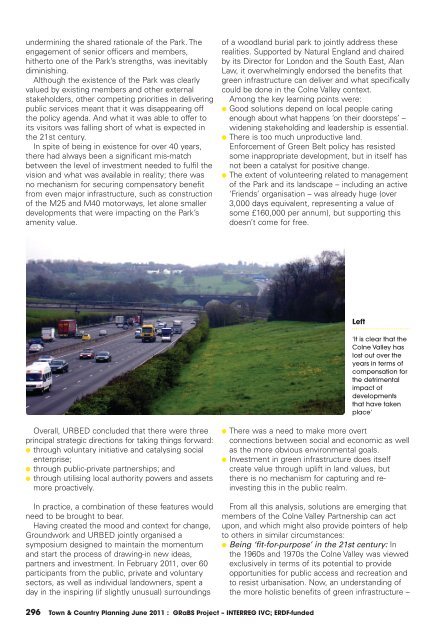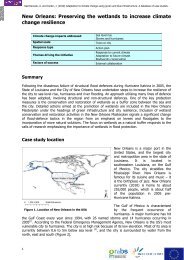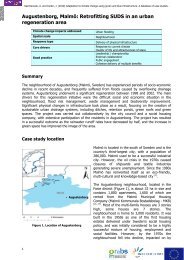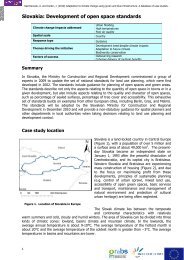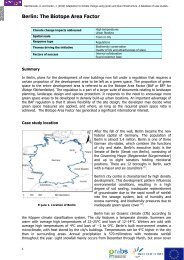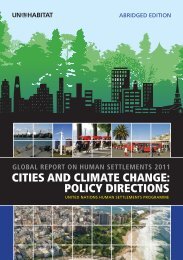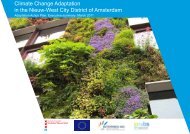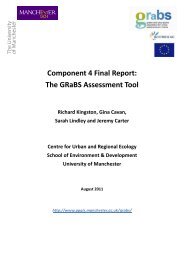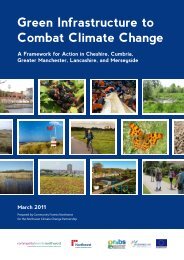Download - GRaBS
Download - GRaBS
Download - GRaBS
You also want an ePaper? Increase the reach of your titles
YUMPU automatically turns print PDFs into web optimized ePapers that Google loves.
undermining the shared rationale of the Park. The<br />
engagement of senior officers and members,<br />
hitherto one of the Park’s strengths, was inevitably<br />
diminishing.<br />
Although the existence of the Park was clearly<br />
valued by existing members and other external<br />
stakeholders, other competing priorities in delivering<br />
public services meant that it was disappearing off<br />
the policy agenda. And what it was able to offer to<br />
its visitors was falling short of what is expected in<br />
the 21st century.<br />
In spite of being in existence for over 40 years,<br />
there had always been a significant mis-match<br />
between the level of investment needed to fulfil the<br />
vision and what was available in reality; there was<br />
no mechanism for securing compensatory benefit<br />
from even major infrastructure, such as construction<br />
of the M25 and M40 motorways, let alone smaller<br />
developments that were impacting on the Park’s<br />
amenity value.<br />
of a woodland burial park to jointly address these<br />
realities. Supported by Natural England and chaired<br />
by its Director for London and the South East, Alan<br />
Law, it overwhelmingly endorsed the benefits that<br />
green infrastructure can deliver and what specifically<br />
could be done in the Colne Valley context.<br />
Among the key learning points were:<br />
● Good solutions depend on local people caring<br />
enough about what happens ‘on their doorsteps’ –<br />
widening stakeholding and leadership is essential.<br />
● There is too much unproductive land.<br />
Enforcement of Green Belt policy has resisted<br />
some inappropriate development, but in itself has<br />
not been a catalyst for positive change.<br />
● The extent of volunteering related to management<br />
of the Park and its landscape – including an active<br />
‘Friends’ organisation – was already huge (over<br />
3,000 days equivalent, representing a value of<br />
some £160,000 per annum), but supporting this<br />
doesn’t come for free.<br />
Left<br />
‘It is clear that the<br />
Colne Valley has<br />
lost out over the<br />
years in terms of<br />
compensation for<br />
the detrimental<br />
impact of<br />
developments<br />
that have taken<br />
place’<br />
Overall, URBED concluded that there were three<br />
principal strategic directions for taking things forward:<br />
● through voluntary initiative and catalysing social<br />
enterprise;<br />
● through public-private partnerships; and<br />
● through utilising local authority powers and assets<br />
more proactively.<br />
In practice, a combination of these features would<br />
need to be brought to bear.<br />
Having created the mood and context for change,<br />
Groundwork and URBED jointly organised a<br />
symposium designed to maintain the momentum<br />
and start the process of drawing-in new ideas,<br />
partners and investment. In February 2011, over 60<br />
participants from the public, private and voluntary<br />
sectors, as well as individual landowners, spent a<br />
day in the inspiring (if slightly unusual) surroundings<br />
● There was a need to make more overt<br />
connections between social and economic as well<br />
as the more obvious environmental goals.<br />
● Investment in green infrastructure does itself<br />
create value through uplift in land values, but<br />
there is no mechanism for capturing and reinvesting<br />
this in the public realm.<br />
From all this analysis, solutions are emerging that<br />
members of the Colne Valley Partnership can act<br />
upon, and which might also provide pointers of help<br />
to others in similar circumstances:<br />
● Being ‘fit-for-purpose’ in the 21st century: In<br />
the 1960s and 1970s the Colne Valley was viewed<br />
exclusively in terms of its potential to provide<br />
opportunities for public access and recreation and<br />
to resist urbanisation. Now, an understanding of<br />
the more holistic benefits of green infrastructure –<br />
296 Town & Country Planning June 2011 : <strong>GRaBS</strong> Project – INTERREG IVC; ERDF-funded


